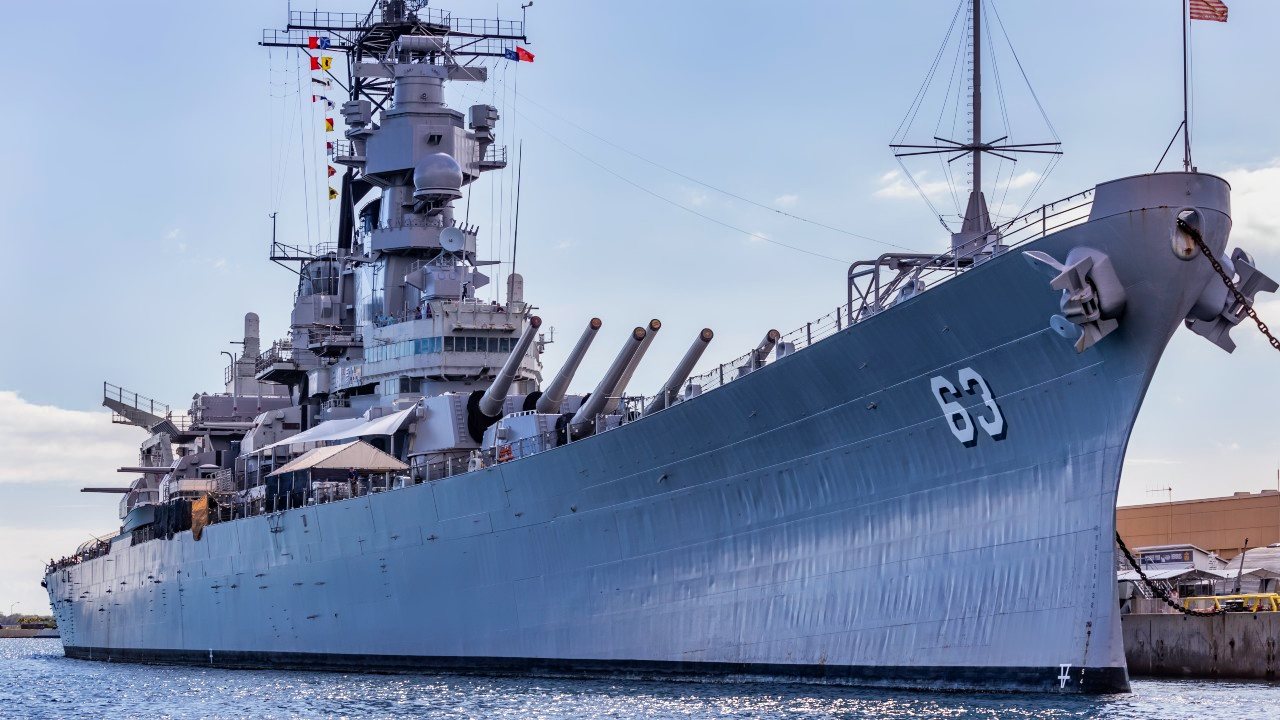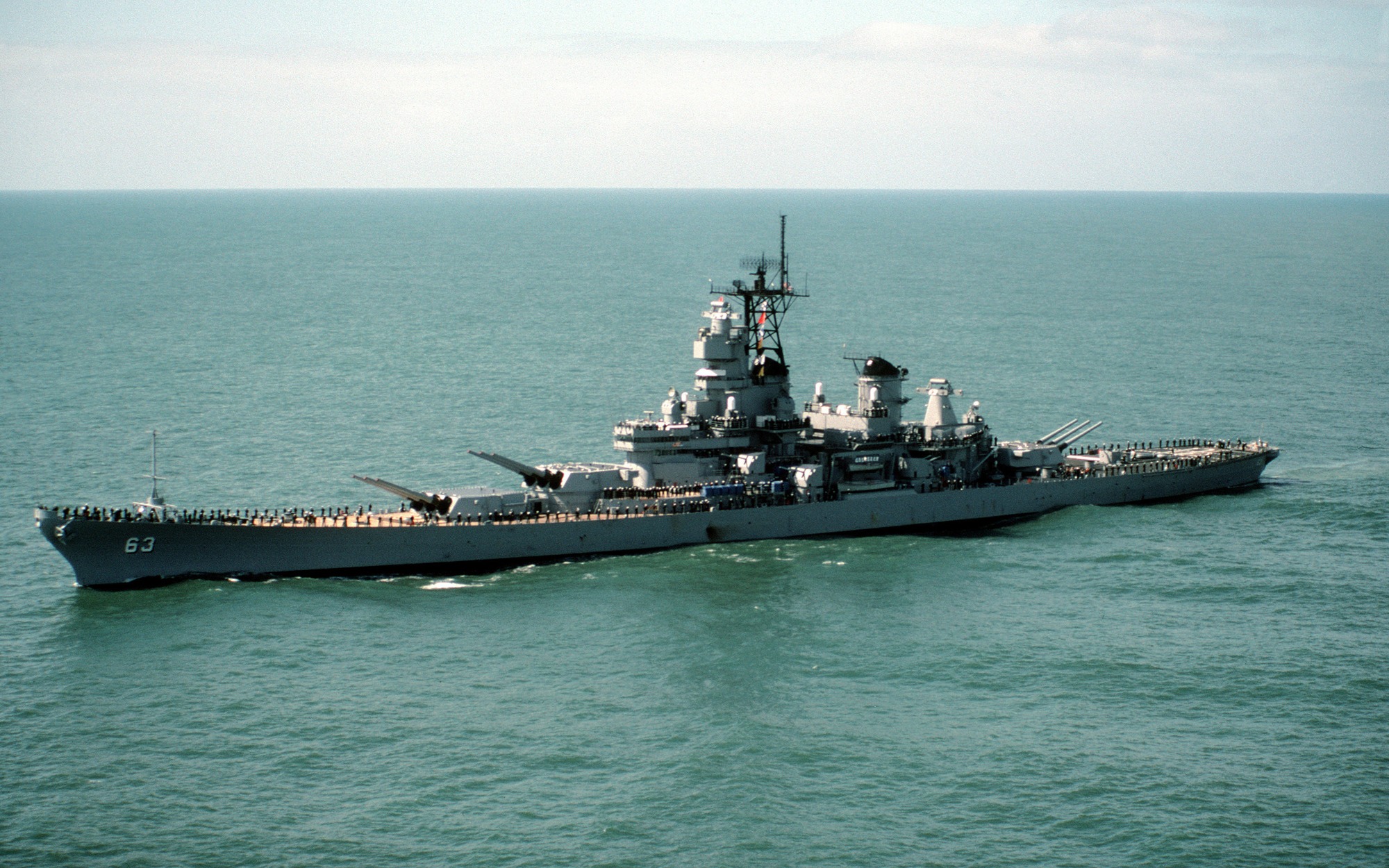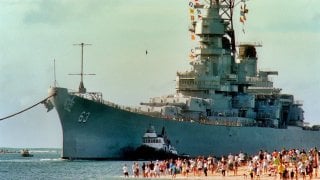64,000 Ton Battleship: The U.S. Navy's Montana-Class Was Doomed
The Montana-class super battleships, designed as the largest and most powerful battleships ever for the U.S. Navy, were ultimately canceled in 1943. Featuring twelve 16-inch guns and heavy armor, they could have provided unmatched firepower and morale after Pearl Harbor.
What You Need to Know About this Battleship: The Montana-class super battleships, designed as the largest and most powerful battleships ever for the U.S. Navy, were ultimately canceled in 1943. Featuring twelve 16-inch guns and heavy armor, they could have provided unmatched firepower and morale after Pearl Harbor.

-However, evolving naval strategy emphasized aircraft carriers over battleships, with submarines and planes proving more decisive in combat than ship-on-ship battles.
-While some argue building one Montana-class ship would have bolstered American resolve and sent a message to Japan, the Navy focused resources on aircraft carriers, ultimately shaping modern naval warfare.
Montana-Class Battleships: Could the U.S. Have Used These Super Giants in WWII?
How’d you like to be on the receiving end of a 2,700-pound shell from the barrel of an 18-inch gun? That’s the kind of firepower the Montana-class battleship could have unleashed on a regular basis during World War Two.
The Montana-class was never built but they would have been gargantuan – a super battleship that could outclass the already giant Iowa-class of battle wagons. Was the full cancellation of the Montana-class a mistake? Building just one of the battleships could have helped morale after Pearl Harbor. So, let’s look at the advantages and disadvantages of such a large ship.

Firepower Was Unmatched
With twelve instead of nine 16-inch main guns (the plans for the 18-inch guns were dropped) and twenty 5-inch guns, the proposed Montana, Ohio, Maine, New Hampshire, and Louisiana would have boasted 25-percent more fire power than the already lethal main battery of the Iowa-class. Those 16-inch guns could fire with an astonishing range of up to 23-miles and the projectiles weighed up to 2,700 pounds. Each gun took dozens of sailors to fire.
Montana-Class: Bigger Is Better
The initial blueprints in the late 1930s (and there were several proposals) for the Montana-class’s early design would have been 860-feet long and displaced 52,000 tons with a trial displacement of 64,500 tons. This was the largest ship ever proposed for the Navy – a third bigger than the Iowas. The Iowa-class was faster at 33-knots top speed compared to 28-knots of the Montana-class, but the Montanas had more armor planned.
In 1940, there was another design proposal that would have made the Montana-class even larger – 1,050 feet long with a displacement of 70,000 tons and a trial displacement of 80,000 tons. The Navy finally compromised and cut the length of the Montanas down to 921-feet. But the powerplant was still going to push out 172,000 horsepower.
Need for High Numbers of Sailors
It was going to take a large crew – 2,355 sailors and even more if the Montana served as the flagship. And the armor had to be stouter at 21,000 tons with bulkheads at 18-inches of plating.

Two Ocean War
Why did the Navy want something this big?
The service was planning for war in two theaters – the Atlantic and Pacific. They predicted this correctly as there would eventually be extensive naval battles in both areas of operations. The Japanese also had their own super-battleship in the Yamato. The Americans worried this giant Japanese vessel would outclass the Iowas.
The Navy Predicted that the Aircraft Carrier Would Change Everything
The Navy was also willing to roll with the punches and react to modern trends in warfare. The airplane and the aircraft carrier proved to be more important and vital compared to the battleship. A squadron of dive bombers could menace these big ships to the point of full destruction. Ship on ship warfare was also changing. The Navy had assumed before the war that battleships would use their decisive power to eliminate the maximum amount of enemy shipping.
Enemy submarines were also always dangerous, and a launch of numerous torpedoes at once could endanger the battleship – no matter how thick the armor.
Plus, the battleship required a significant amount of fuel and maintenance. In addition, the Navy needed to build more anti-submarine and amphibious assault ships. But the battleship still had value when it came to bombarding shores to prep the battlefield for amphibious landings. This, unfortunately, was not enough of a reason to keep them.
Was Complete Cancellation of the Montana-Class Super Battleship a Mistake?
The Navy cancelled the Montana-class program in 1943. That may have been a partial mistake.
Building just one super battleship – the USS Montana – could have sent a message to the Japanese that the Americans were serious about re-building the fleet after Pearl Harbor. It would have been expensive and taken at least one aircraft carrier off the table, but battleships had a positive psychological effect which the Navy needed after the Japanese sneak attack.
One Montana-class super battleship could have given the Navy a morale boost entering into conflict in the Pacific, but alas, it was not to be.
About the Author
Brent M. Eastwood, PhD, is the author of Humans, Machines, and Data: Future Trends in Warfare. He is an Emerging Threats expert and former U.S. Army Infantry officer. You can follow him on Twitter @BMEastwood.
All images are Creative Commons. All images are of Iowa-Class Battleships.


